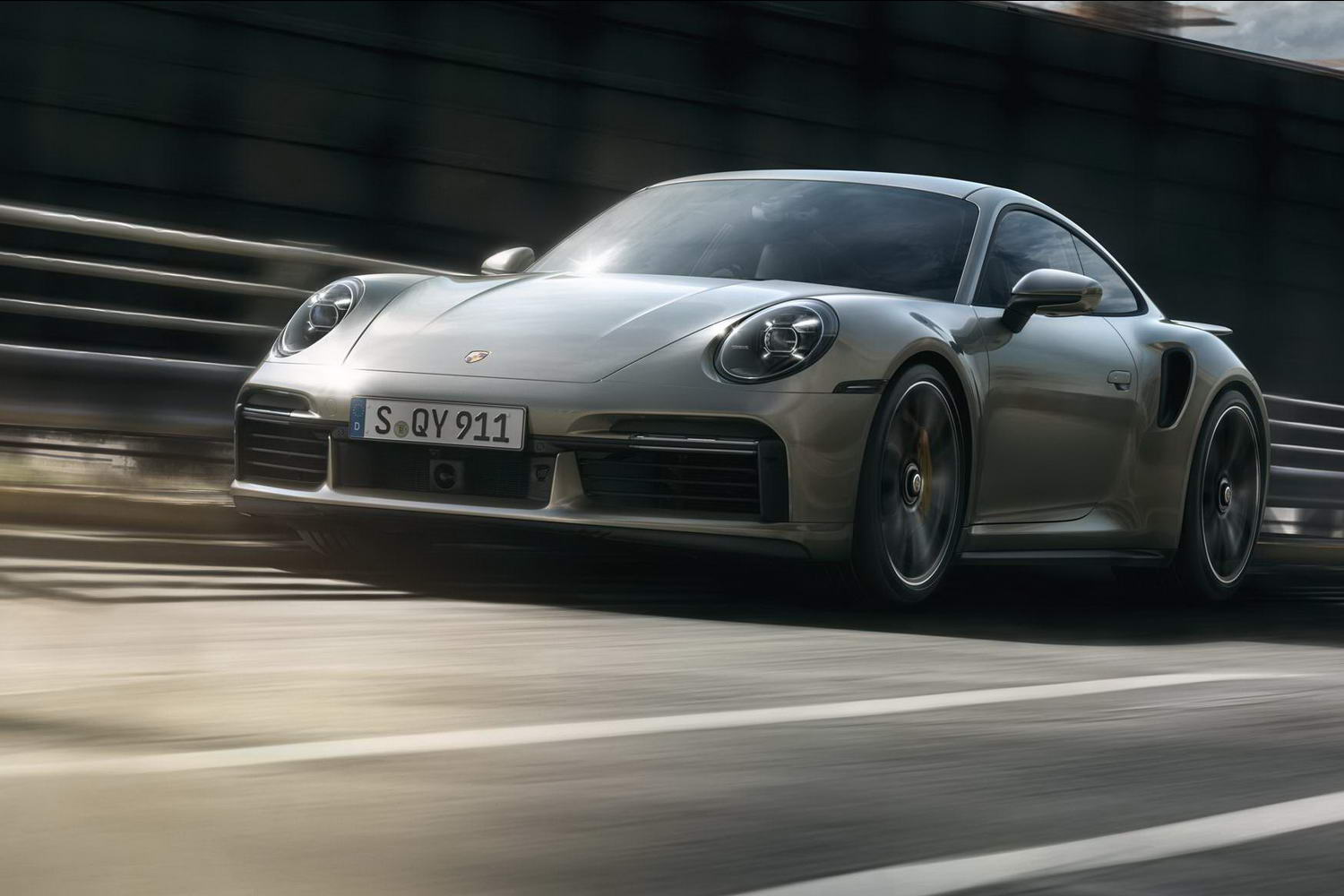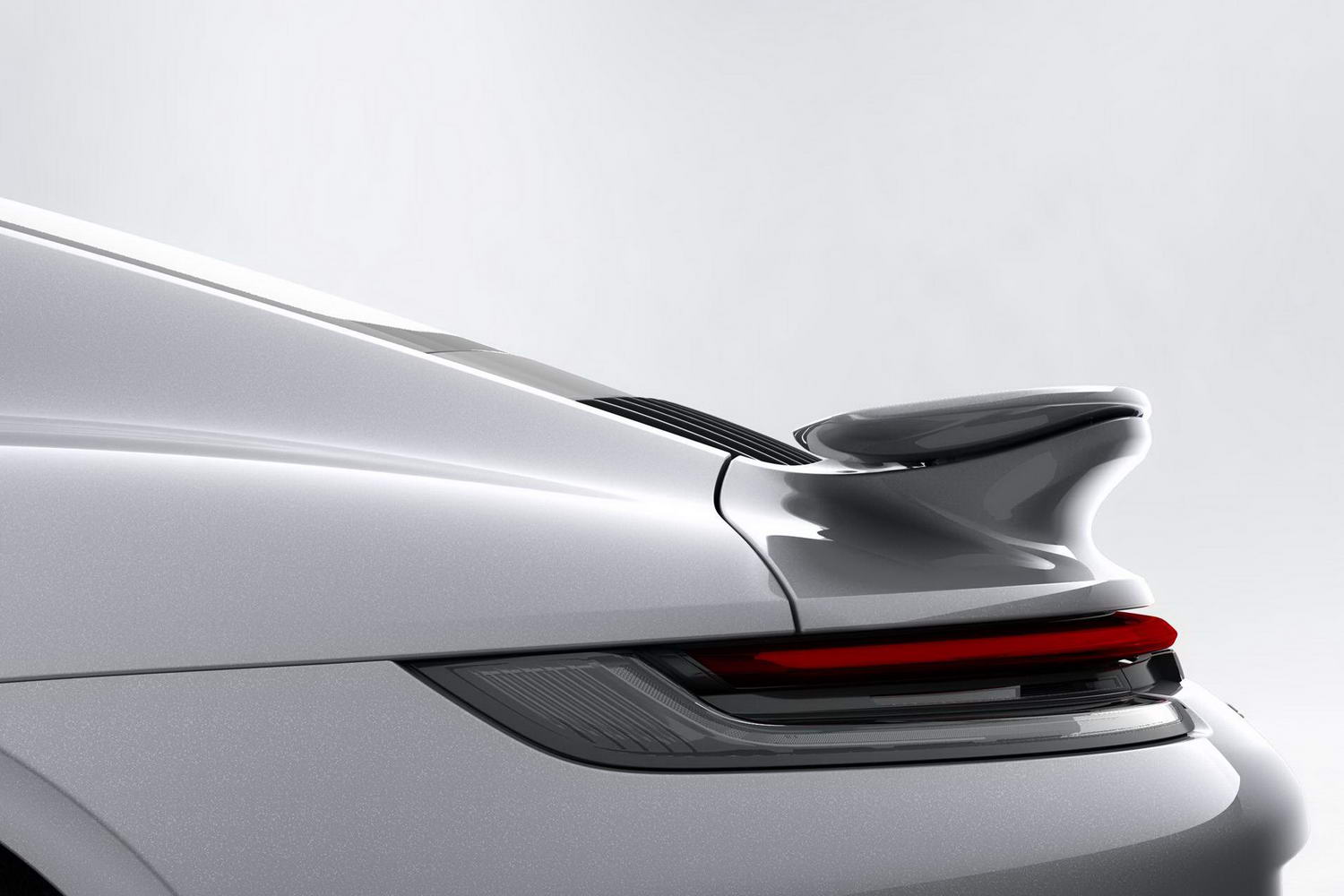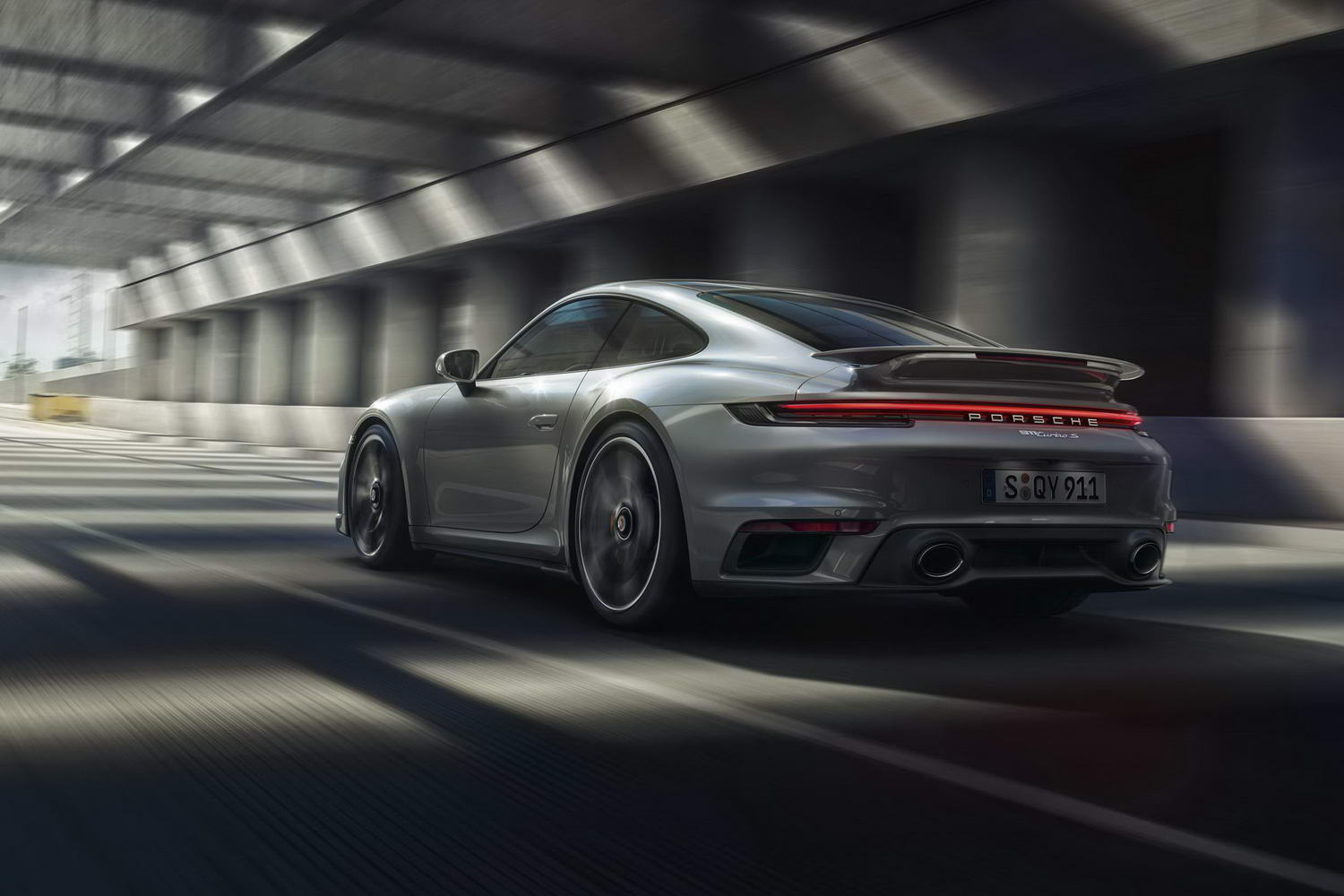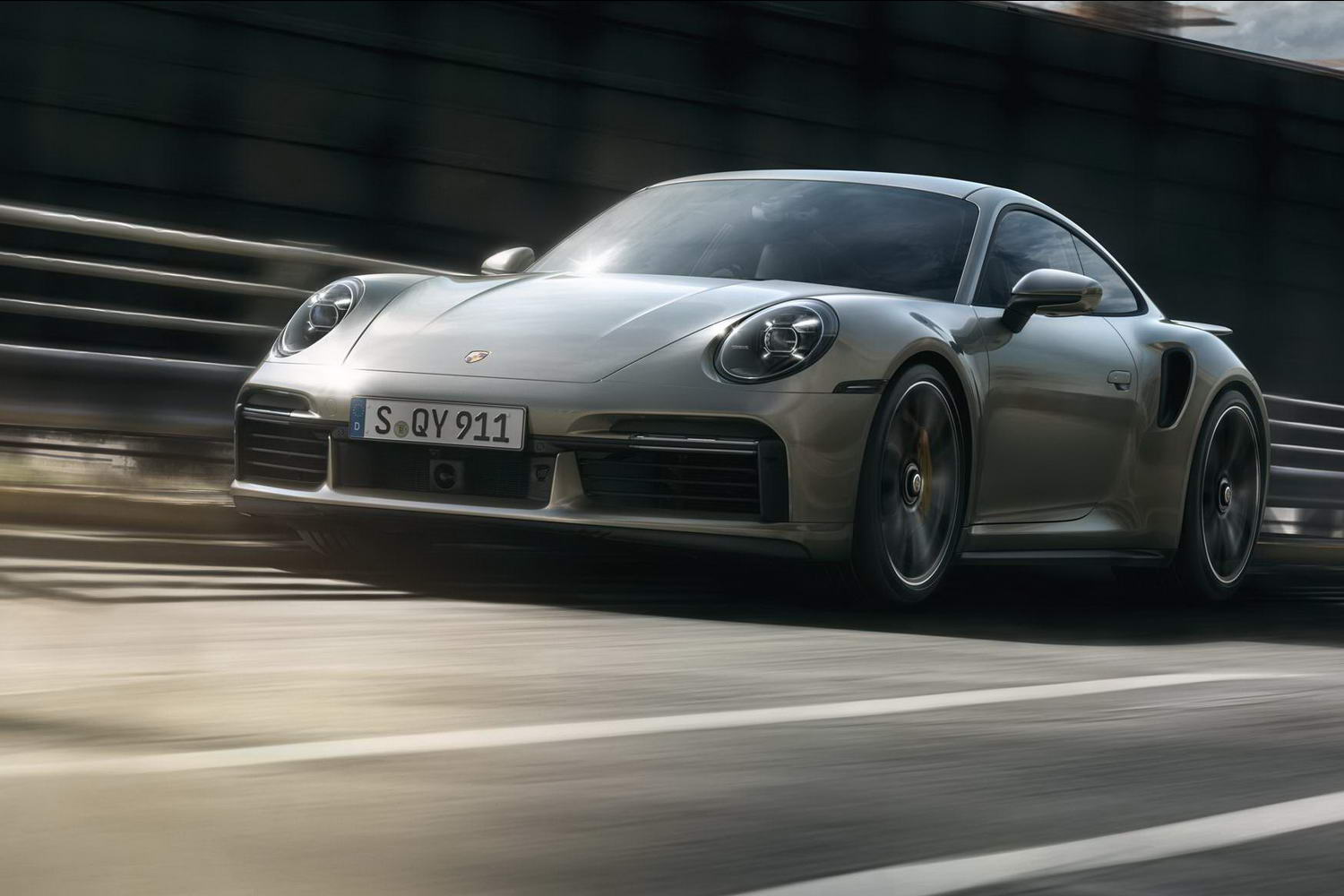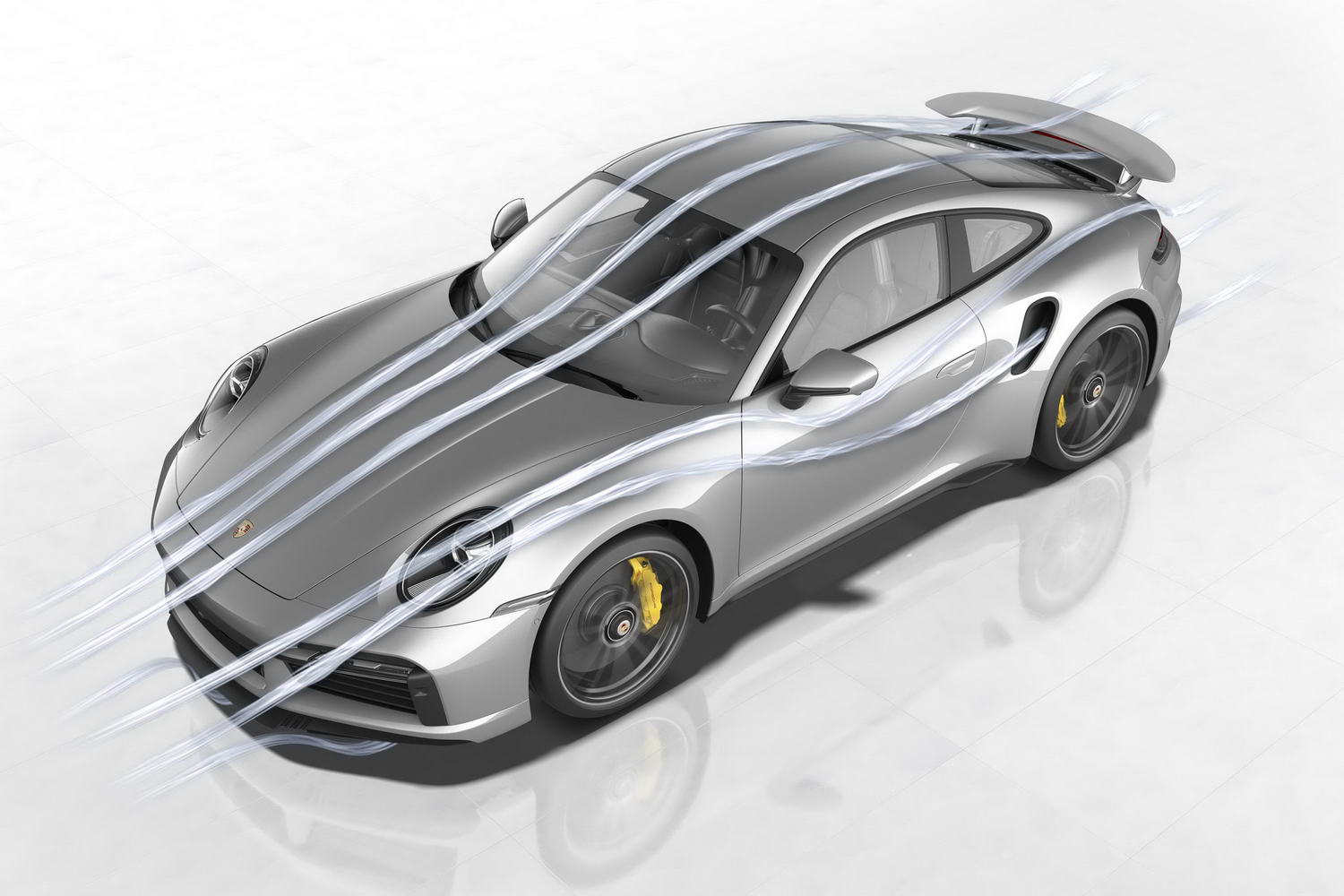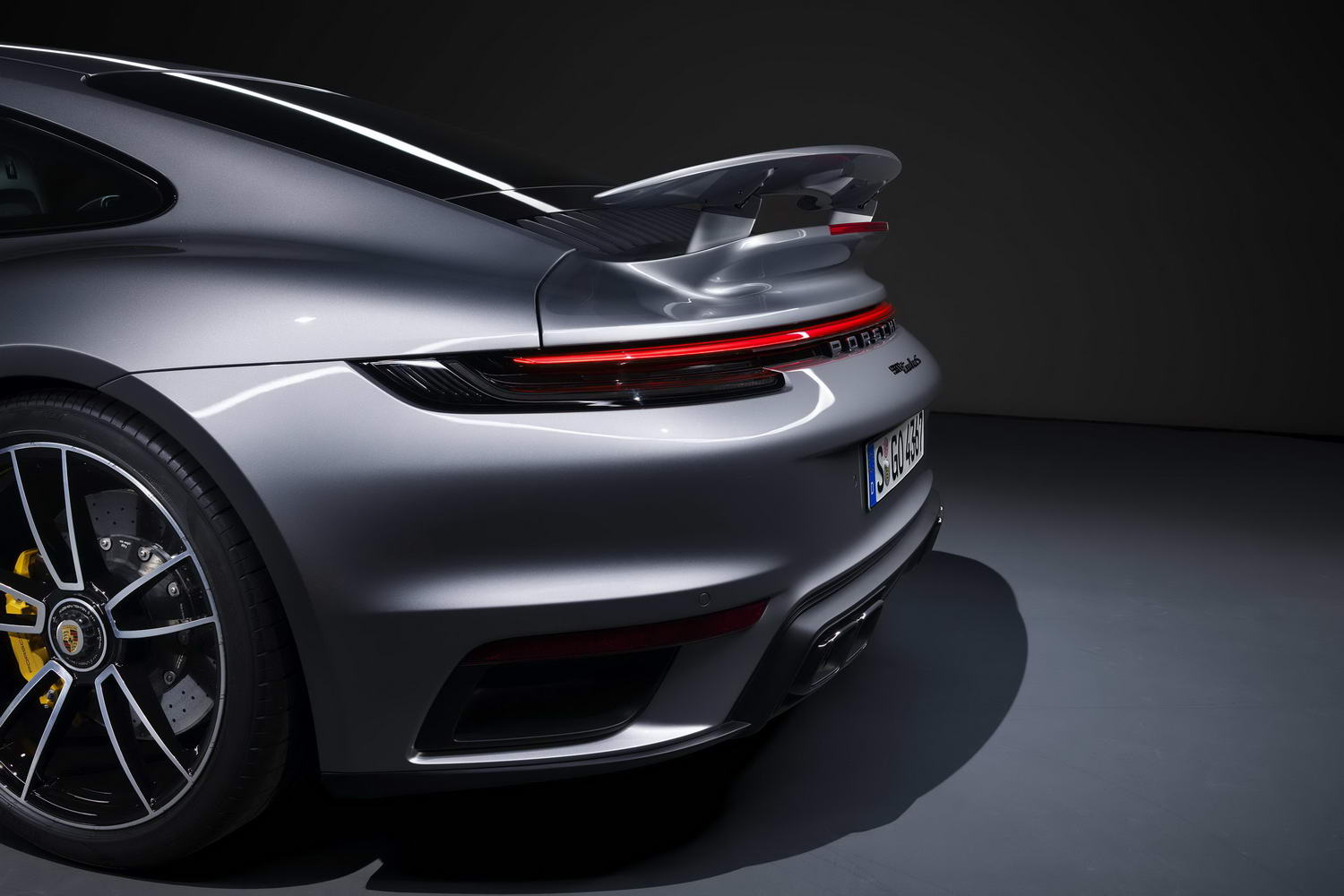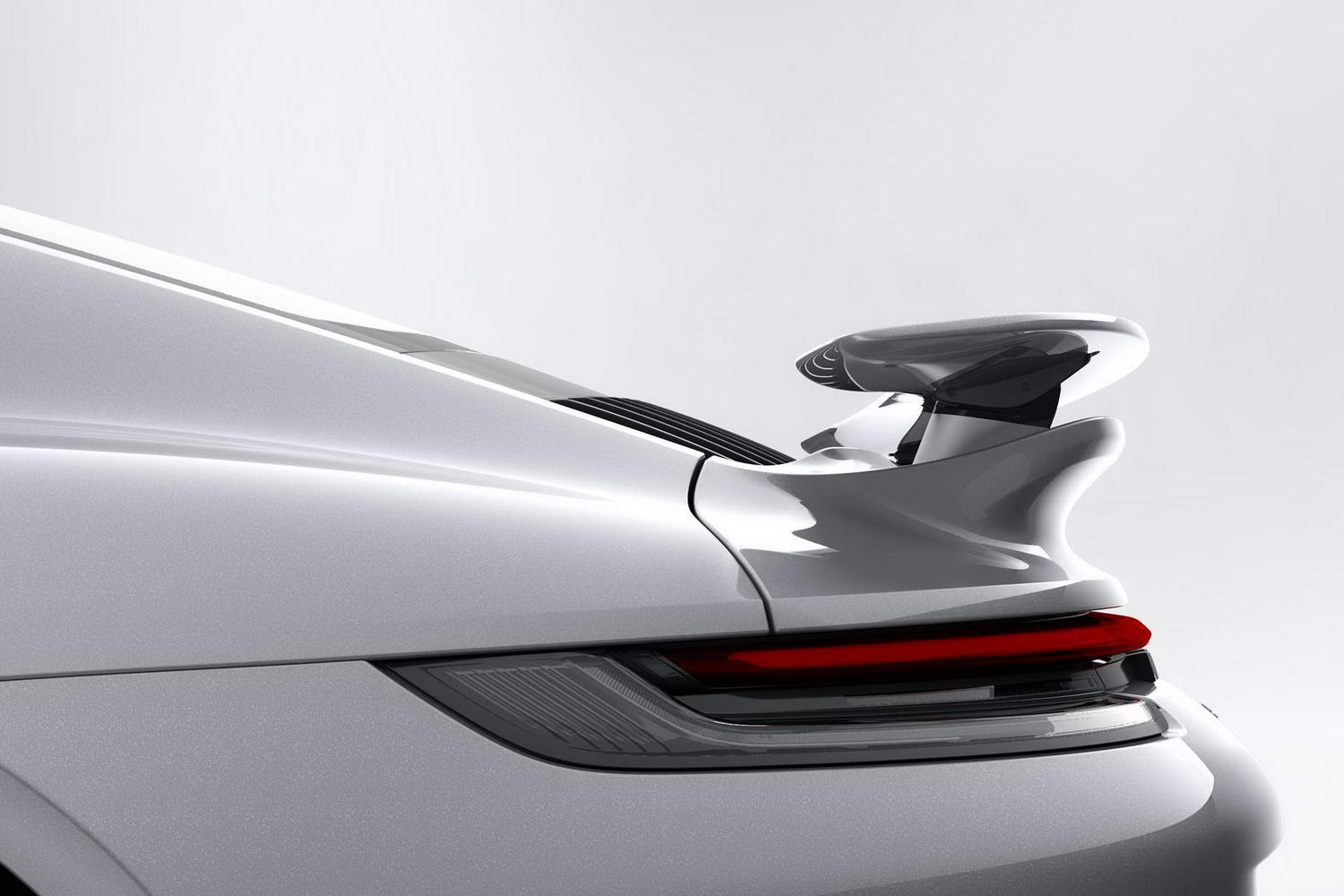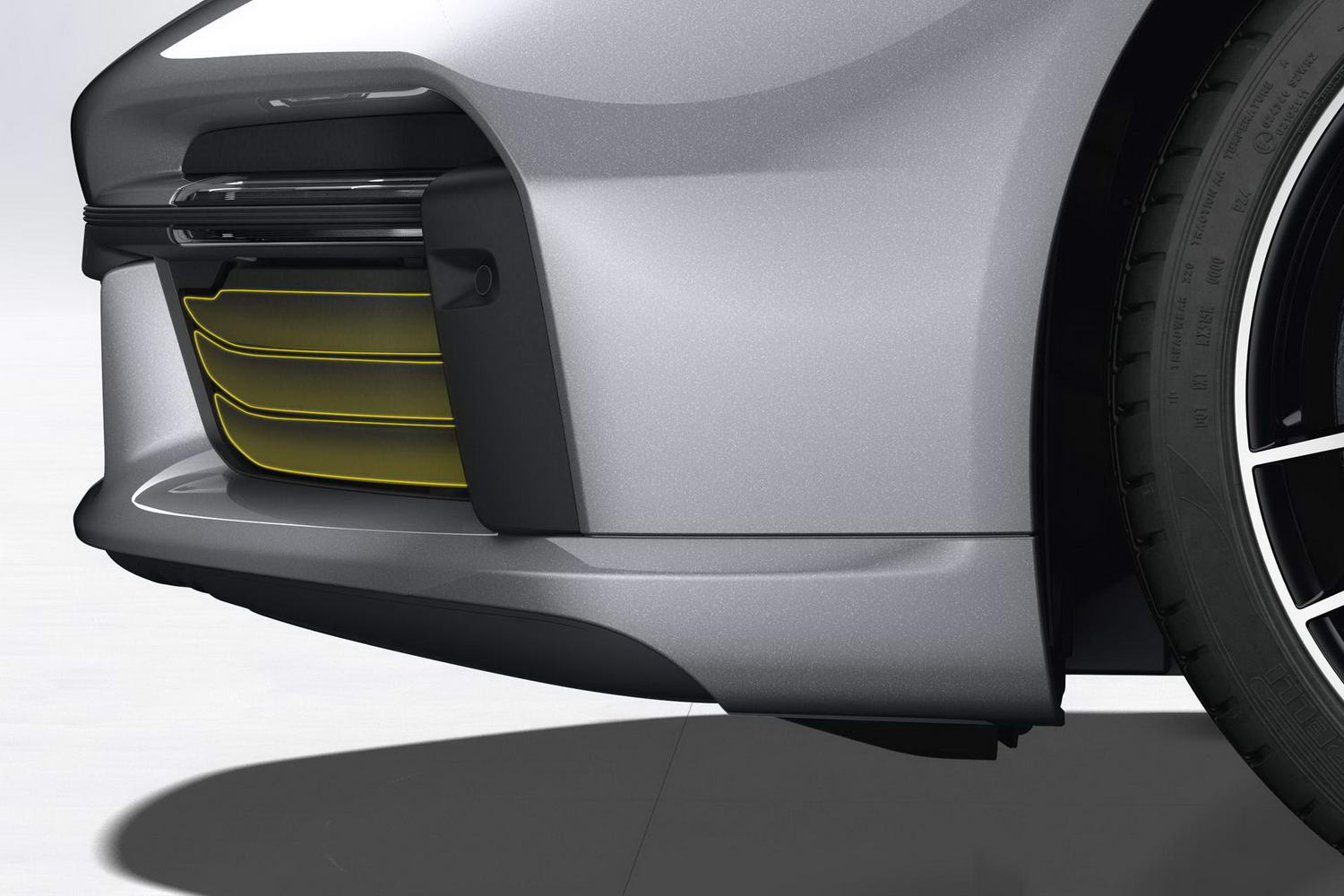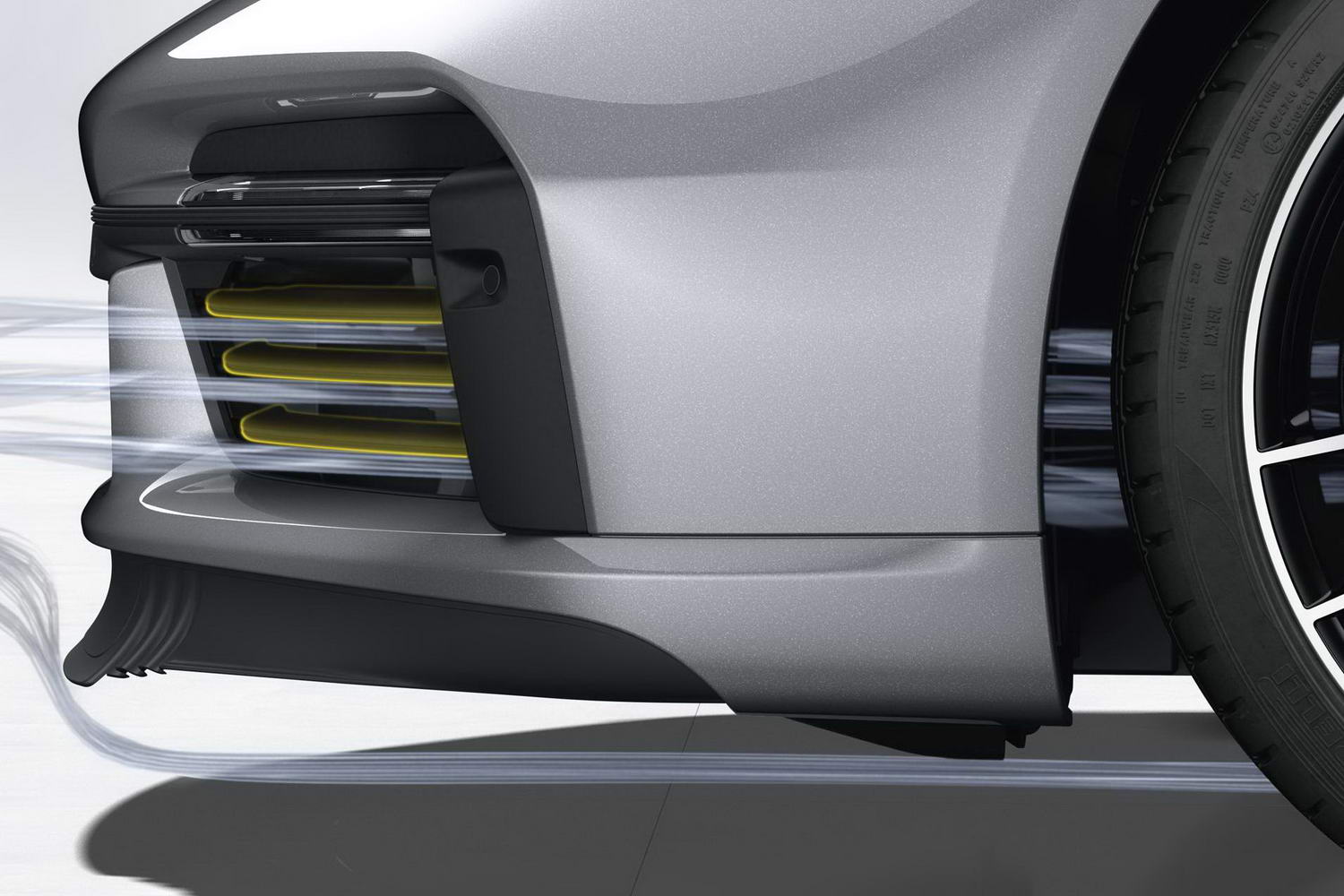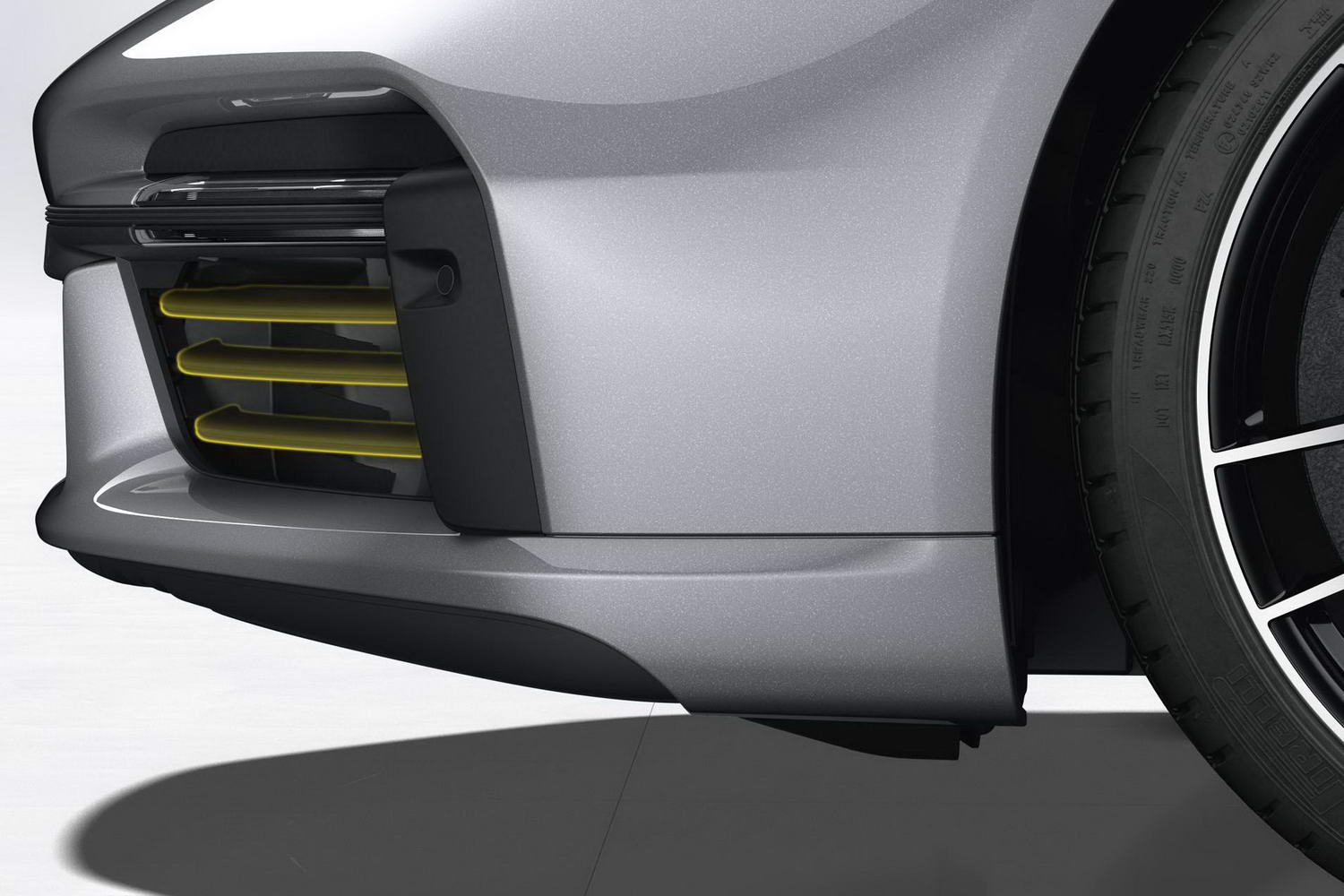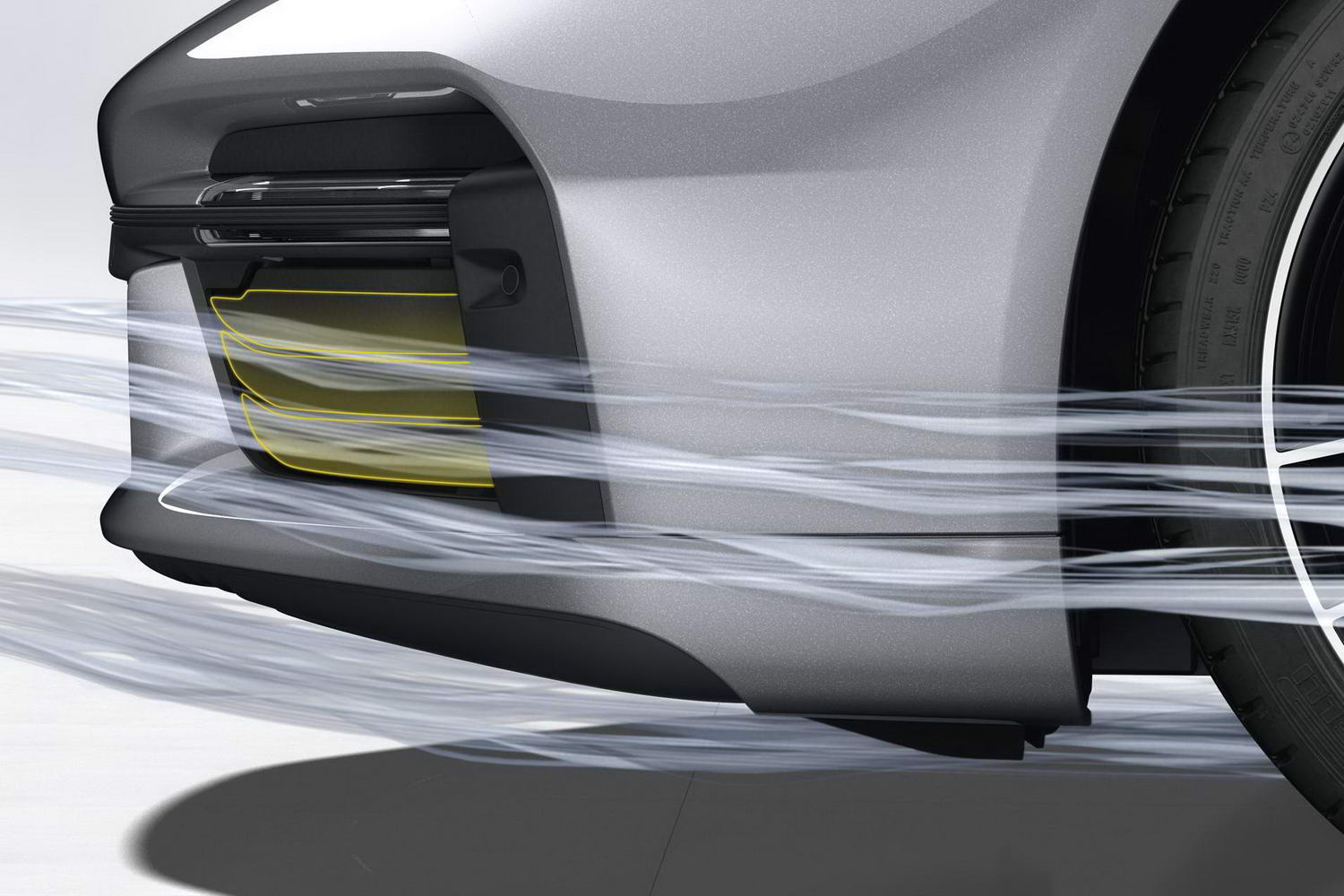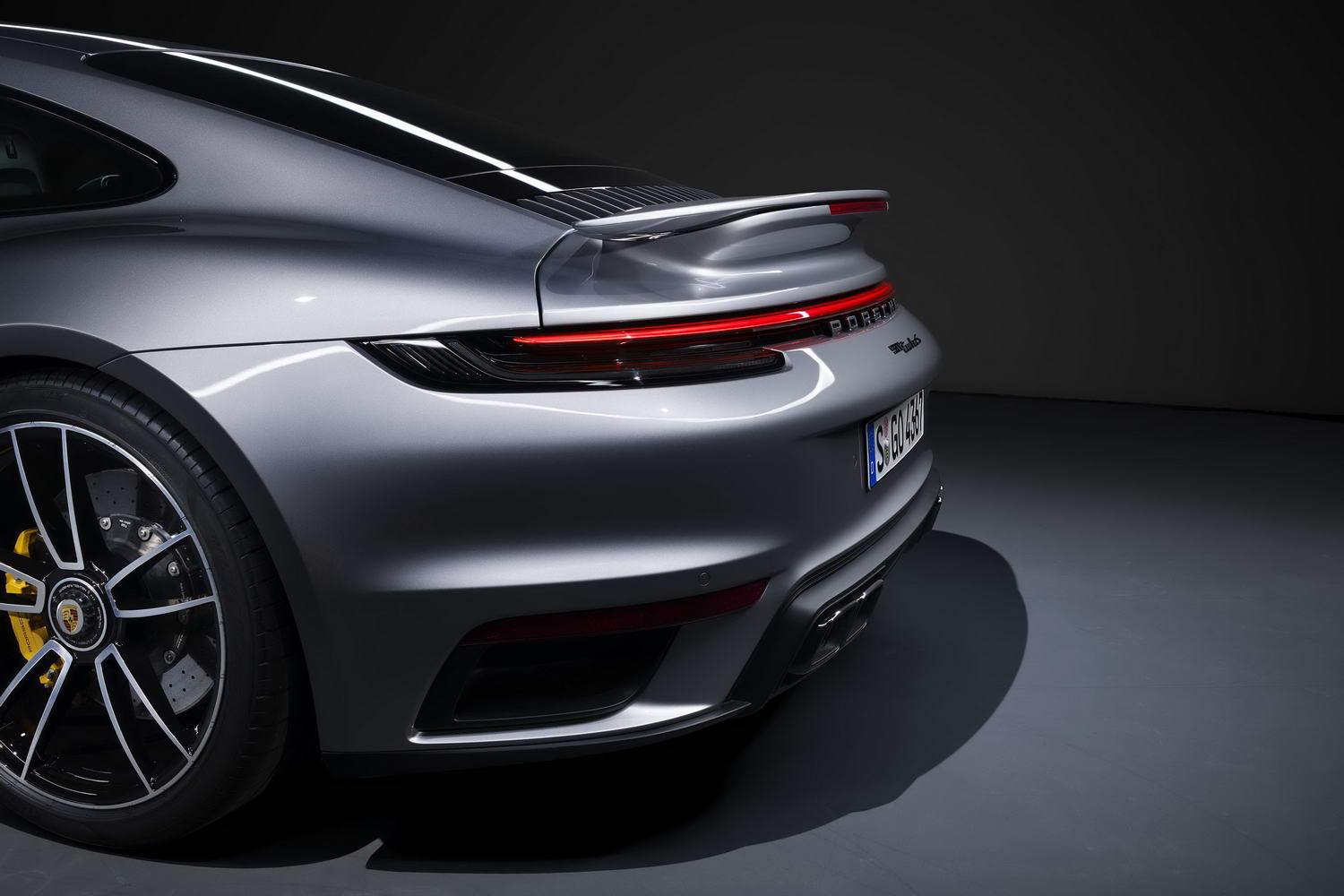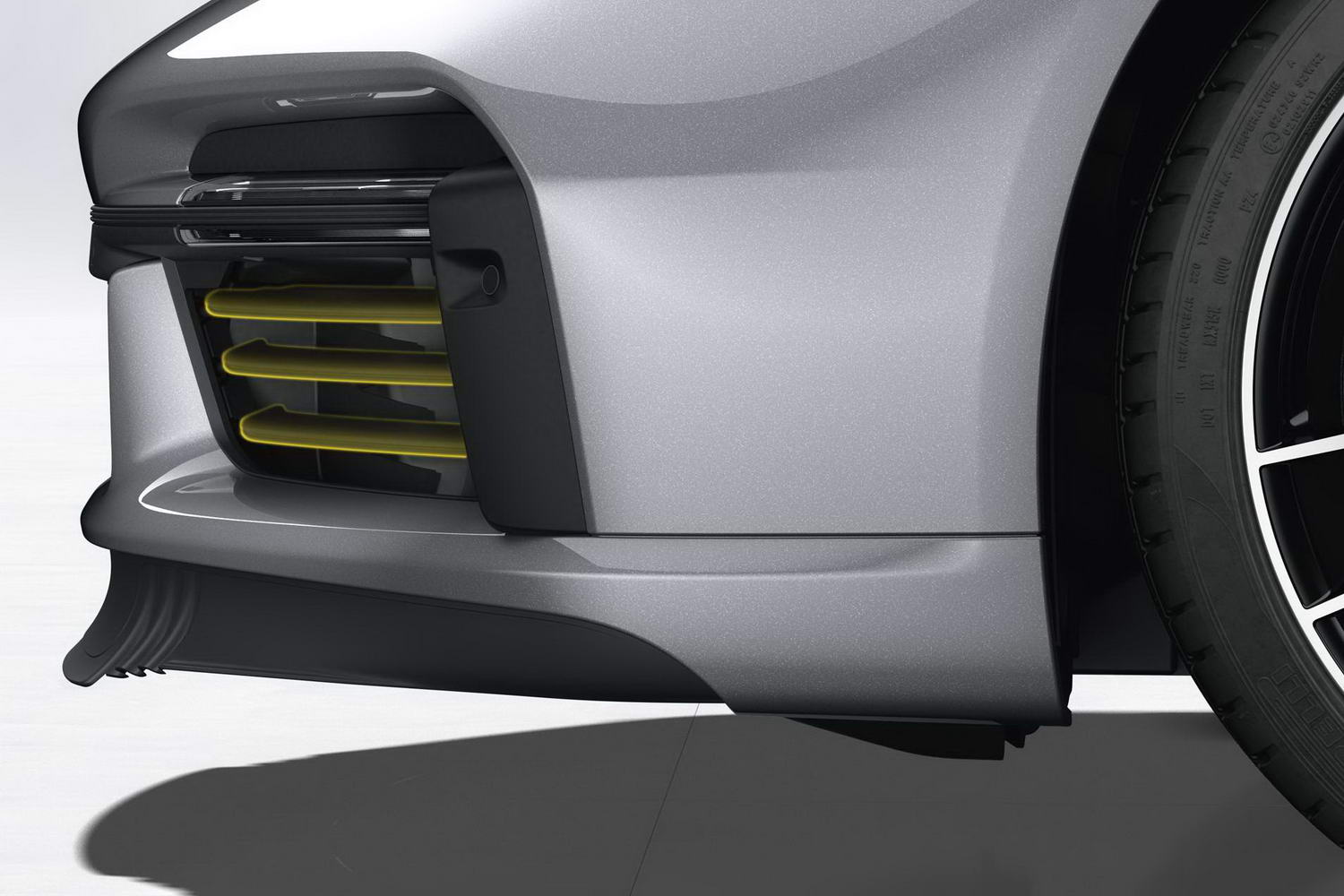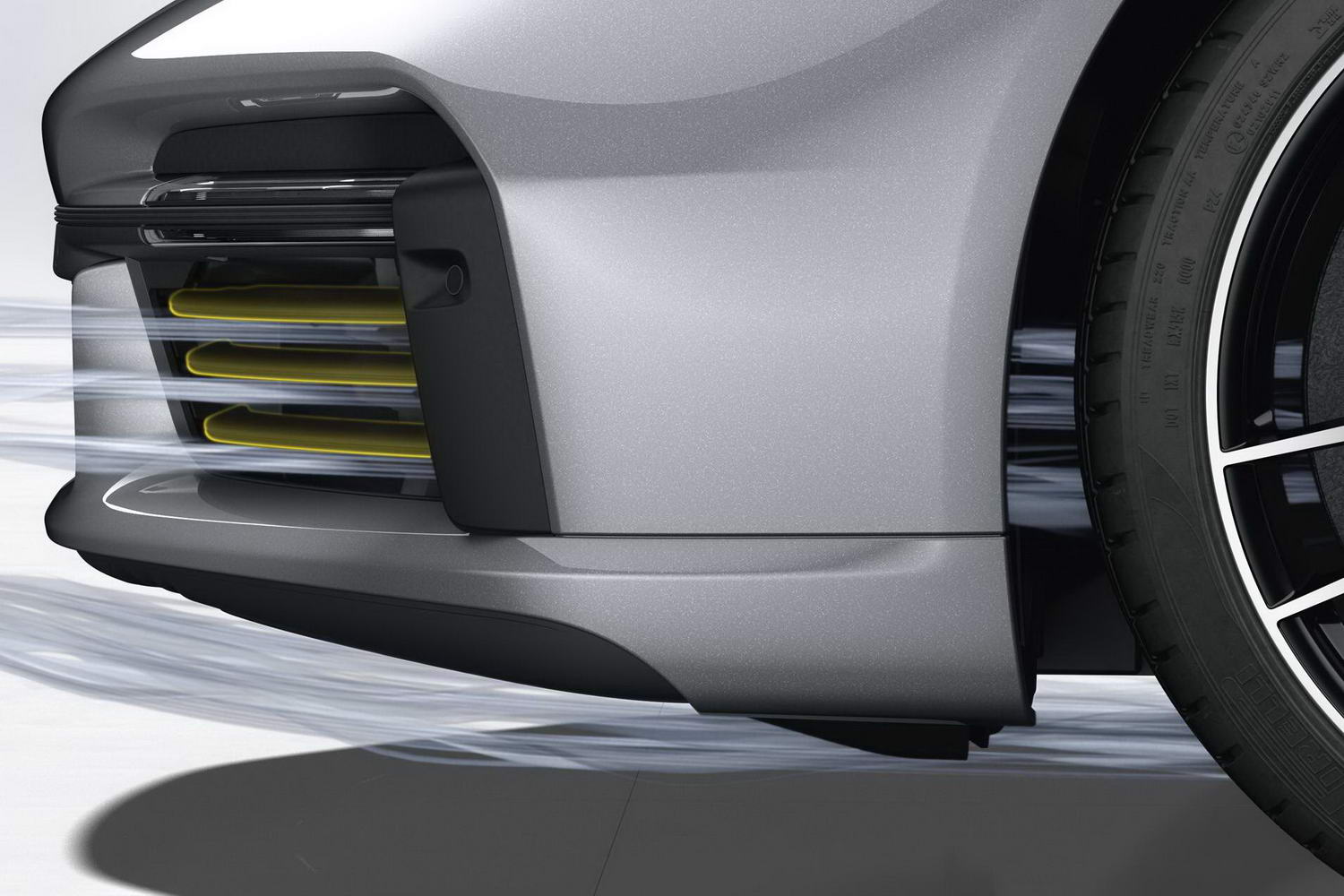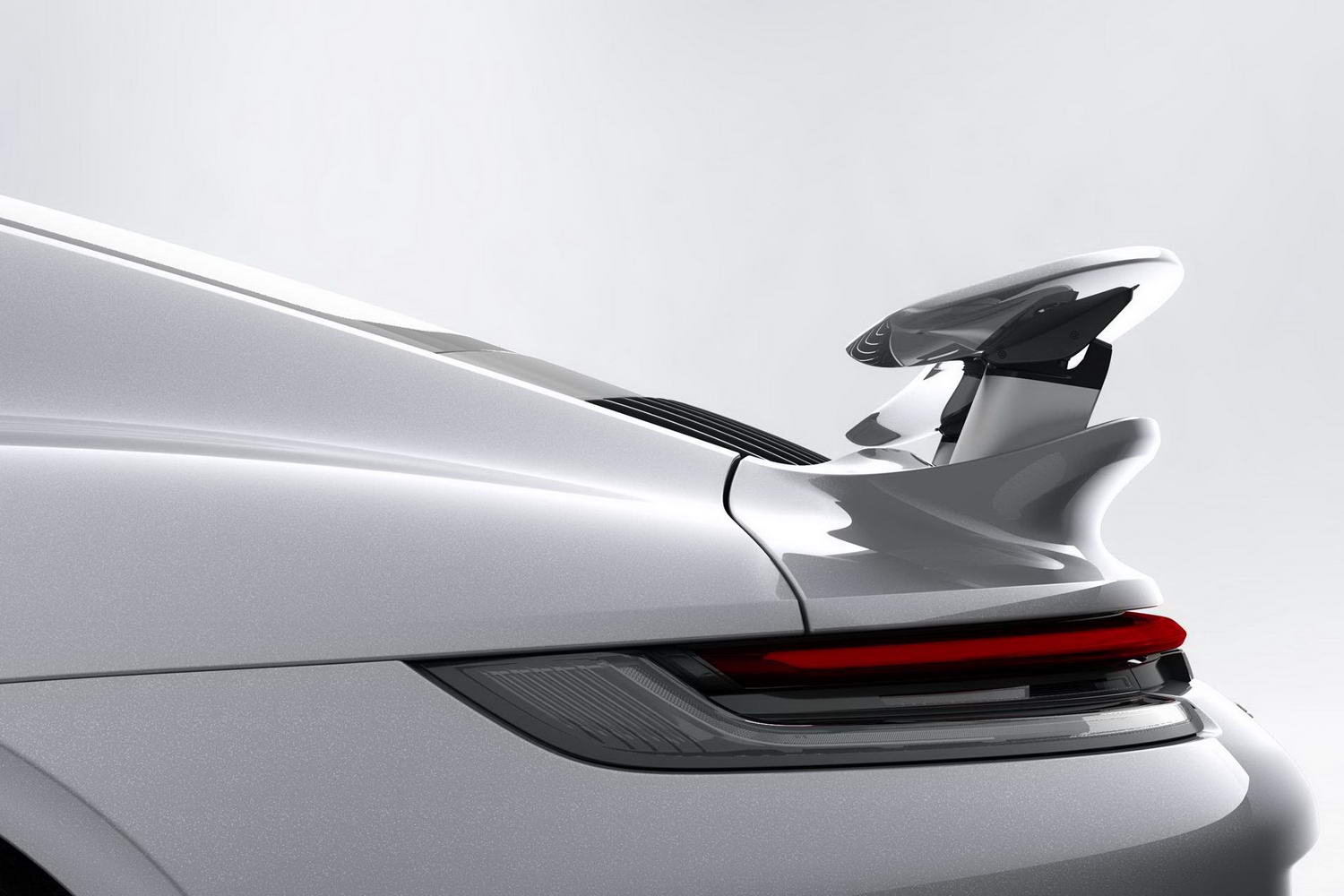Porsche has revealed a few of the aerodynamic tricks and tweaks of the new 911 Turbo. The 'Big-T' turbo (as opposed to standard 911s which are turbocharged, but don't shout about it) comes with 650hp in Turbo S form. So, it needs some serious aerodynamic assistance to keep all that power in check on the road...
Balancing drag and downforce
The 911 Turbo, as with all other cars in the Porsche lineup now, uses Porsche Active Aerodynamics (PAA). That can be as simple as a folding rear-wing, or something rather more sophisticated...
"No other sports car reacts to different situations with such aerodynamic flexibility as the new 911 Turbo S. We aerodynamic engineers are normally faced with a dilemma: a low drag coefficient is desirable for maximum speed and low consumption, while a high downforce is advantageous for driving dynamics. However, the two characteristics contradict each other," explains Dr Thomas Wiegand, Head of Aerodynamics Development at Porsche.
"PAA resolves the conflicts between these different aerodynamic goals. The comprehensive expansion of the intelligent system in the 911 Turbo S makes it possible to achieve a much larger spread between the aerodynamic configurations for optimum driving dynamics and minimum drag. What is more, there is increased potential for the aerodynamic components to support specific driving dynamics demands in every driving situation."
Three moving aero surfaces
The 911 Turbo uses three moving aerodynamic surfaces, and the big rear wing is just the most obvious of those. There are also a variable front lip spoiler and - new for this model - active cooling air flaps.
These new flaps are found down low, on the left and right of the main air intake in the front bumper. They can open and close as needed, and are generally designed to stay closed once you're driving above 70km/h, so as to make the 911 Turbo as aerodynamically smooth as possible. However, once you're above 150km/h (Autobahn only, please) they actually open up again, to allow high-pressure are through the bumper and provide better aerodynamic balance for high-speed stability. The flaps also open up when Sport, Sport Plus and Wet driving modes are active and when Porsche Stability Management (PSM) is deactivated or the spoiler button pressed.
Wet Mode
Wet mode? Oh yes, the 911 Turbo has a 'Wet Mode' and the aero package plays its part in that, too. The idea is that the moveable surfaces concentrate airflow to the rear of the car, increasing rear downforce for maximum traction in the wet. The airbrake function of the rear wing is also kicked up a notch in Wet Mode, so as to shorten braking distances as much as possible.
PAA can also tweak the way the air flows around the car if you've chosen the convertible or sunroof options, so as to minimise buffeting. The overall downforce levels have also increased, relative to the old 911 Turbo, up by 15 per cent to 170kg total downforce. In spite of that (and remembering that downforce equals drag) the 911 Turbo is surprisingly slippery through the air, with a coefficient of drag (Cd) of just 0.33.
That front lip spoiler is pretty clever, too. It's actually inflatable, and made of a stretchy material called elastomer. PAA can choose to separately inflate the middle or outer sections as needed, and when it's fully-retracted, it's actually held in place by magnets so that it doesn't flap around in the air flow. There's even an embossed '911 Turbo' logo on the centre section, which is only legible when the lip spoiler is fully extended.
Around the back, the big rear wing is also pretty clever. It's 440 grammes lighter than the same component on the old 911 Turbo, but has an effective area that's eight per cent larger. It's made of a mix of glass-fibre and carbon-fibre plastics, and has new functions.
The old 911 Turbo rear wing simply had Speed and Performance settings. The new one has an Eco position (fully retracted for minimum drag); a Performance II position (set lower down to minimise drag above 260km/h and decrease the load on the rear tyres); and the new Wet Mode position (extended but not tilted up).

